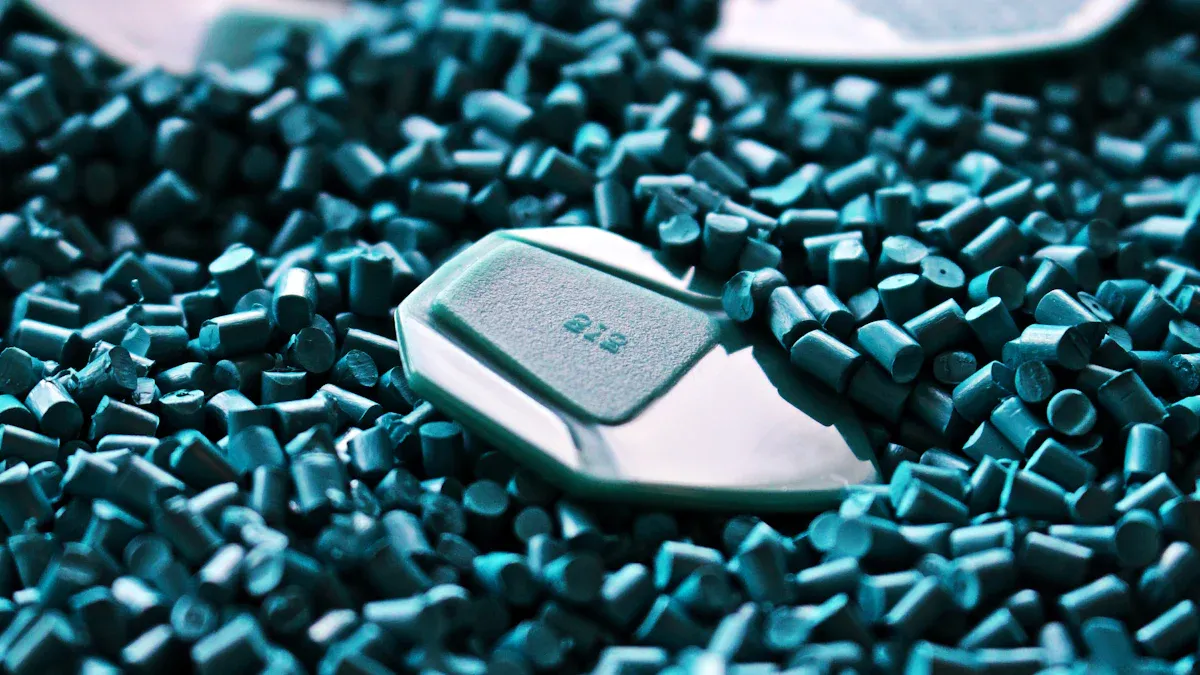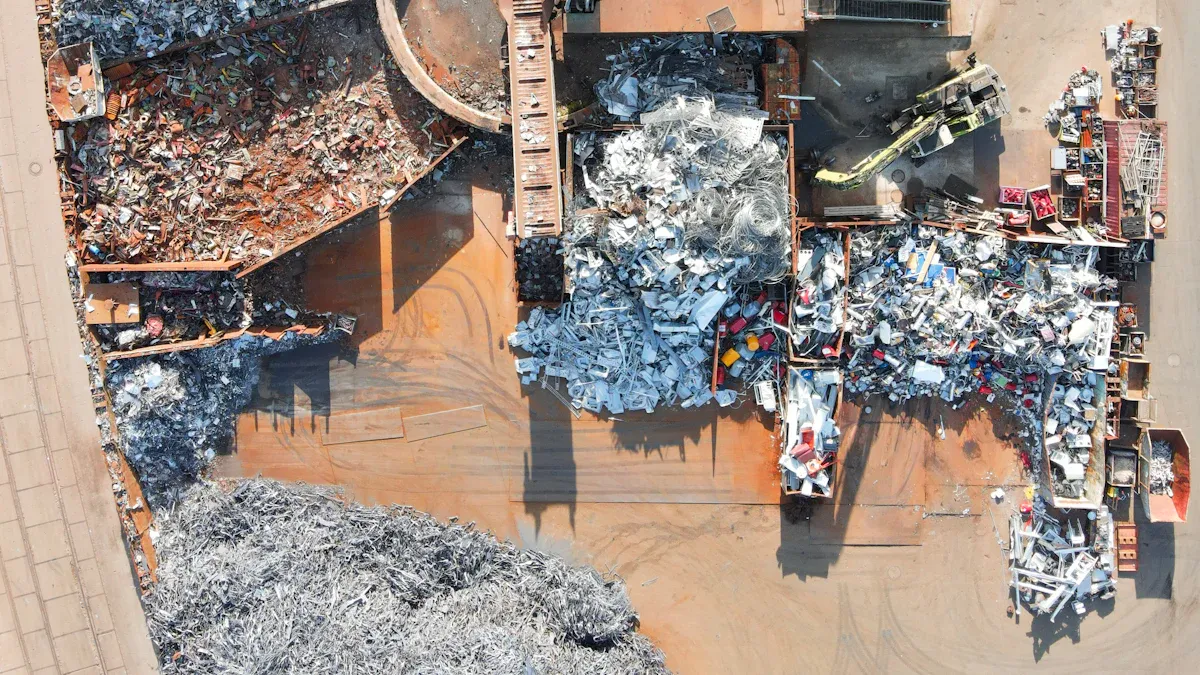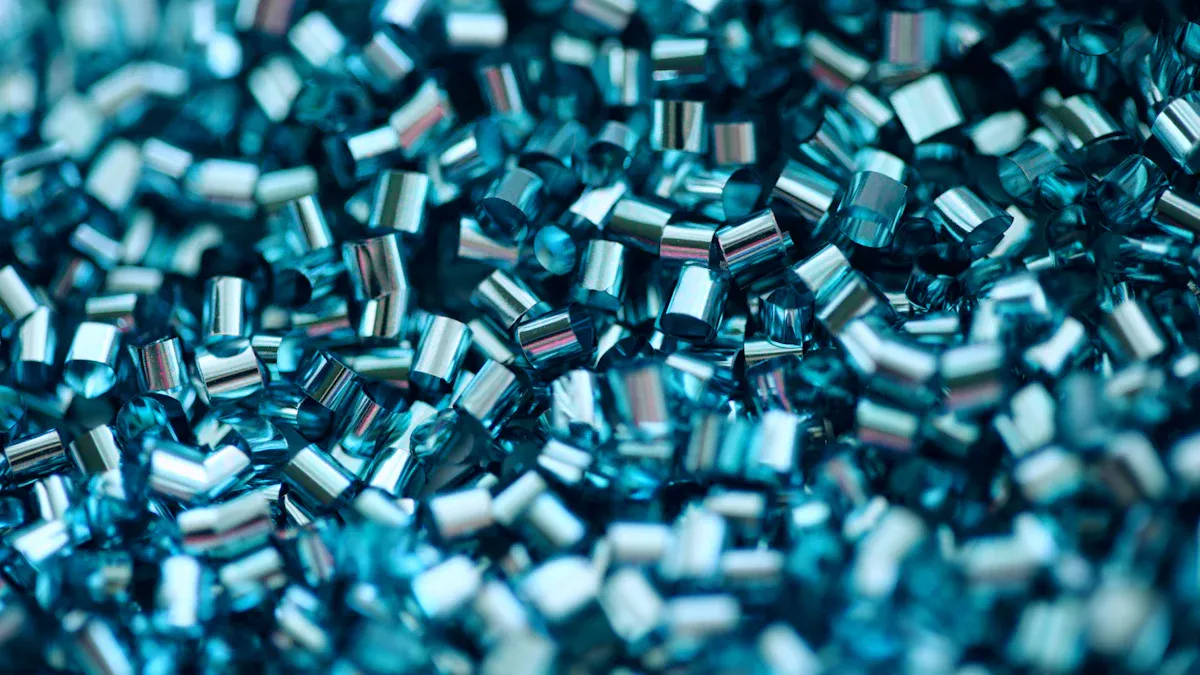
A Plastic Recycling Machine in 2025 features several essential components, such as advanced collection systems, sorting units, a Granulator Machine, and a Plastic Shredder. Each stage in the process is crucial for transforming waste into reusable pellets, making the Plastic Recycle Machine highly efficient. According to the latest market data, PET scrap imports reached nearly 251,000 tonnes in 2024.
| Category | Statistic / Trend Description |
|---|---|
| PET Scrap Imports (2024) | 250,961 tonnes, nearly 49% of total scrap imports |
Key Takeaways
- Plastic recycling machines use a step-by-step process including collection, sorting, shredding, washing, separation, extrusion, and pelletizing to turn waste into reusable plastic pellets efficiently.
- Smart technologies like AI-driven sorting and advanced washing systems improve recycling accuracy, reduce waste, and boost the quality of recycled plastics.
- New recycling machines save energy and cut emissions, making the plastic recycling process more sustainable and cost-effective for the future.
Plastic Recycling Machine Process and Main Components

Collection Systems
Collection systems form the starting point for any Plastic Recycling Machine. These systems gather plastic waste from homes, businesses, and public spaces. Many cities now use smart bins and digital tracking to boost collection rates. Digital tools help operators see real-time data, which means they can respond quickly to full bins or missed pickups.
Tip: Training for waste collectors and reward programs can make collection more effective and keep plastic waste out of landfills.
Some key factors that improve collection system efficiency include:
- Real-time waste reporting and automated data collection.
- Performance monitoring using key indicators like throughput and downtime.
- Staff training on machine operation and safety.
- Energy-saving strategies, such as using efficient equipment and regular maintenance.
Legislation also plays a big role. Laws now require a certain amount of recycled content in products, which pushes companies to collect more plastic for recycling.
Sorting Units
Sorting units separate plastics by type, color, and quality. This step is vital because different plastics need different recycling processes. Modern sorting units use lasers and AI to scan and sort plastics at high speeds. For example, laser-sorting systems can scan up to 860,000 spectra per second, making it easier to sort even tricky black plastics. FT-NIR detectors now last up to 8,000 hours between faults, which means less downtime and more accurate sorting.
| Sorting System Combination | Separated Plastic Waste (kg per inhabitant) |
|---|---|
| Post separation only | 6.2 |
| Curbside collection only | 5.6 |
| Combination of post separation + curbside | 7.6 – 8.0 |
| Curbside collection + bring locations | 3.5 |
Countries that use strict source-separation policies, like South Korea, recycle up to 70% of their municipal waste. Advanced sorting units with AI and near-infrared technology can reach over 90% accuracy, which boosts the quality and yield of recycled plastics.
Shredders and Granulators
Shredders and granulators break down large plastic items into smaller pieces. This makes it easier for the Plastic Recycling Machine to process the material in later steps. Operators must keep blades sharp and feed the machine at a steady rate to avoid jams. Removing contaminants before shredding also helps the machine last longer.
Some best practices for shredders and granulators include:
- Regular maintenance and blade checks.
- Pre-washing materials to reduce wear.
- Keeping a consistent feed rate.
- Managing dust and noise for safety.
- Training operators to spot and fix problems quickly.
Performance metrics like throughput rate, energy use, and output quality help operators keep these machines running smoothly.
Washing Systems
Washing systems clean the shredded plastic. They remove dirt, labels, and leftover food or chemicals. Clean plastic is easier to recycle and makes better products. Studies show that washing with cold or hot water, sometimes with cleaning agents, can remove most contaminants. After washing, drying brings moisture down to 3% or less, which is ideal for further processing.
| Washing Method | Contaminant Removal Efficiency | Melt Flow Index (MFI) Variability | Mechanical Properties (Ductility) | Notes |
|---|---|---|---|---|
| Unwashed (rPPu) | None | High variability | Low elongation at break | Contaminants cause degradation |
| Cold Water Wash (rPPcw) | Significant | Reduced variability | Slight ductility improvement | Energy-efficient |
| Hot Water Wash (rPPhw) | High | Similar to cold wash | Slight ductility improvement | Comparable to cold wash |
| Hot Water + Agents (rPPhwca) | High | Similar to cold wash | Slight ductility improvement | Comparable to cold wash |
Washing systems that combine water and air drying can improve the quality and processability of recycled plastics.
Separation Technologies
Separation technologies refine the plastic stream even further. These systems use methods like near-infrared sorting, flotation, and even chemical processes to separate plastics by density or chemical makeup. Companies like Dow and SABIC use advanced sorting and compatibilizer additives to keep recycled plastic quality high. AI-driven sorting and solvent-based purification also help remove unwanted materials.
| Reference Type | Description | Contribution to Reliability |
|---|---|---|
| Research Articles | Studies on flotation, air classification, and density separation | Provide experimental data for separation methods |
| Patents | Proprietary processes for plastic separation | Ensure effective purification |
| Conference Proceedings | Advances in melt filtration and automated sorting | Improve sorting accuracy and quality |
| Spectral Identification Methods | Near-infrared and laser-induced emission | Enable rapid, reliable sorting |
| Industry Reports | Practical evidence of process optimization | Support real-world application |
These technologies make sure only the right type of plastic moves on to the next step, which is key for making high-quality recycled products.
Extrusion Units
Extrusion units melt and reshape the cleaned plastic into a new form. The Plastic Recycling Machine uses heat and pressure to push the plastic through a mold, creating long strands or sheets. New extruders are much more efficient than older models. For example, new machines can boost productivity by over 36% and lower electricity use, which saves money and energy.
| Metric | Old Extruders | New Extruders | Improvement (%) |
|---|---|---|---|
| Productivity (tons/day) | 11 | 15 | 36.4 |
| Contribution Margin (units) | 6126.9 | 6881.3 | +754.4 |
Advanced extrusion technology keeps the plastic strong, even after several recycling cycles. This means recycled products can last just as long as those made from new plastic.
Pelletizing Units
Pelletizing units cut the extruded plastic into small, uniform pellets. These pellets are easy to transport and use in making new products. Pelletizing efficiency often reaches over 90% when operators control moisture and machine speed.
| Feed Sample | Moisture Content | Die Diameter | Machine Speed (rpm) | Pelletizing Efficiency |
|---|---|---|---|---|
| X1 | 7% | 3 mm | 75 | 94.0% |
| X2 | 7% | 3 mm | 75 | 93.2% |
| X3 | 7% | 3 mm | 75 | 92.1% |
Operators can adjust settings like production rate and knife distance to get the best pellet quality. High pelletizing efficiency means less waste and more usable material for new products.
Innovations in Plastic Recycling Machines for 2025

Smart Sorting and AI Integration
Smart sorting has changed how recycling facilities work. Many companies now use computer vision, deep learning, and hyperspectral imaging in their sorting systems. These tools help robots spot recyclables, plan their movements, and sort plastics with high accuracy. Deep learning models can even predict waste types and help with planning.
- Robotic arms use hyperspectral imaging to adjust their grip, making sorting more precise.
- Neural networks and machine learning help forecast waste production, so facilities can plan better.
- Algorithms like random forest and support vector machines improve sorting, even with small amounts of data.
Real-world examples show the impact. HERA in Italy worked with IBM to add AI to their sorting process. This led to higher recycling rates and less manual work. In Japan and the U.S., AI-powered robots sort waste using sensors and cameras. These robots cost between $250,000 and $500,000 each, but large facilities often see payback in 5 to 10 years because of labor savings and better sorting. Smart bins and sensors also help by reducing how often trucks need to collect waste, saving money and time.
Advanced Washing and Separation Technologies
Washing and separation systems have become smarter and more reliable. Modern washing machines use sensors and automation to control cleaning and drying. This keeps plastic waste clean and ready for the next step. Real-time monitoring helps operators spot problems early and keep the process running smoothly.
- Near-infrared spectroscopy sorts plastics like HDPE with high purity.
- Compatibilizers improve the quality of recycled plastics.
- Solvent-based purification removes tough contaminants and odors.
- Chemical recycling, such as pyrolysis, helps handle mixed or dirty plastics.
Gravity separation methods, like sink-float and hydrocycloning, separate plastics by density. New techniques, such as microwave irradiation, make these methods even better. Optical sensors and AI image recognition boost sorting accuracy, helping facilities reach up to 95% purity in recycled polymers.
Energy Efficiency and Sustainability
Energy efficiency is now a top goal for every Plastic Recycling Machine. Research from the National Renewable Energy Laboratory shows that new recycling methods use less energy and create fewer greenhouse gases. Their Materials Flows through Industry tool helps companies track energy use and emissions, making it easier to find ways to save energy.
Integrated recycling processes now reach energy efficiency rates of 75%. These improvements come from better separation systems and smarter machine designs. Life cycle studies show that using renewable energy in recycling can cut global warming impacts even more. These advances help move the plastics industry toward a more sustainable future.
A Plastic Recycling Machine uses collection, sorting, shredding, washing, separation, extrusion, and pelletizing to turn waste into new products. Recent advances like chemical recycling and smart sorting help companies recover high-quality plastics. These changes make recycling more efficient and support a cleaner, greener future for everyone.
FAQ
What plastics can a recycling machine process in 2025?
Most machines handle PET, HDPE, LDPE, PP, and PS. Some advanced models can even process mixed or dirty plastics using new separation technologies.
Note: Always check the machine’s manual for a full list of accepted plastics.
How do smart sorting systems help recycling?
Smart sorting uses AI and sensors. These tools spot different plastics quickly. They boost sorting accuracy and reduce mistakes. Facilities get cleaner, higher-quality recycled materials.
Are plastic recycling machines energy efficient now?
Yes! New machines use less power. They have better motors and smart controls. Many facilities now track energy use to save money and lower emissions.
Post time: Jun-24-2025